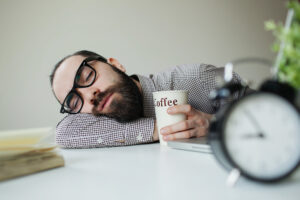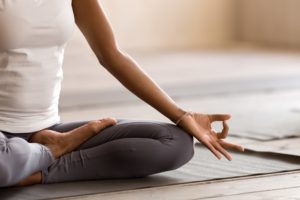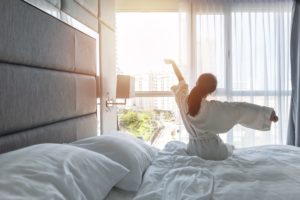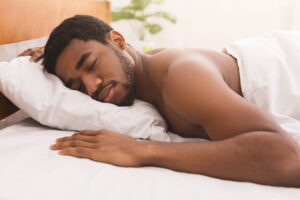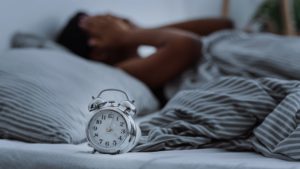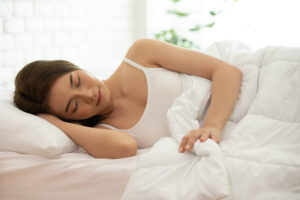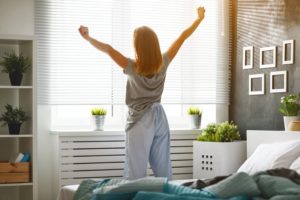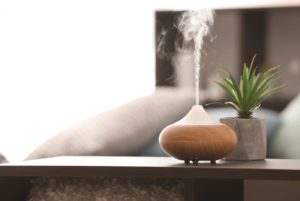Sleeping on the Floor: Benefits & Side Effects
Many people prefer to sleep on the floor. In some cultures, it is actually more common to sleep on the floor instead of a bed. Some people sleep on the floor for more personal reasons. Sleeping on the floor allows a person to live a more minimalist lifestyle, which many prefer. Some people mayplac sleep on the floor because they do not have the space or budget for a full-sized bed at the moment.
Regardless of what initially sparked your interest in sleeping on the floor, it is normal to wonder if it is good for you. While there are potential benefits and drawbacks of sleeping on the floor, there is still very little scientific research on the subject. If you are considering sleeping on the floor, it may be helpful to understand the pros and cons before making a decision.
Are You Getting Enough Deep Sleep?
A variety of issues can cause degrade your sleep quality. Answer three questions to understand if it’s a concern you should worry about.
Benefits of Sleeping on the Floor
Potential benefits of sleeping on the floor include a cooler sleep temperature, relief from back pain, and better posture.
It May Offer Relief From Back Pain
Many people believe a firmer mattress is better for back pain , including 75% of orthopedic surgeons . The National Institute of Neurological Disorders and Stroke also recommends those with back pain sleep on a firm surface.
The causes for back pain are numerous and diverse. Depending on what’s causing your back pain and what your preferred sleep position is, it’s possible a firmer sleep surface could provide some relief. For example, it’s common to experience back pain during pregnancy . Although most pregnant women likely prefer beds, some may find sleeping on a firm surface like the floor to be more comfortable.
Some people sleep on mattresses that are too soft for their body weight. When a mattress is too soft, you are more likely to sink deeply into the mattress. This can lead to poor sleep posture that causes your spine to curve out of alignment. This misalignment can increase pressure on your spine and contribute to back pain.
In one meta-analysis of 24 studies, researchers found that of all mattress types, medium firm mattresses were consistently shown to provide the most relief from back pain, along with improved spinal alignment and sleep quality. However, medium firm mattresses are still significantly softer than the floor.
It May Improve Your Posture
Poor posture can be another contributor to back pain and lead to other problems like reduced flexibility, spinal misalignment, and increased risk of injury . Good posture supports the natural curvature of your spine. Sleeping on the floor can make it easier for you to keep your spine straight during sleep, since you don’t have to worry about sinking too deeply into a mattress. However, you may need to use pillows to decrease pressure on your spine, such as placing a thin pillow beneath your lower back.
It May Be Cooler
Heat rises, so it follows that sleeping on the floor would allow for a cooler sleep experience. When the floor itself is cold, it reduces your body heat quickly. For those who sleep hot, this can make sleep more comfortable, especially during the hot summer months. In general, people tend to sleep better in a cooler bedroom environment.

Downsides of Sleeping on the Floor
Potential drawbacks of sleeping on the floor may include increased back pain, allergies, and discomfort.
It May Increase Back Pain
While some people with back pain find it beneficial to sleep on the floor, others may find it increases their back pain. Without adequate cushioning around pressure points like your hips and shoulders, sleeping on the floor can cause stiffness and discomfort .
Studies of adults with lower back pain have found that among various mattress types, medium firm mattresses provided more relief over a 90-day period — both during the day and while lying in bed — than firm mattresses did.
It May Be Too Cold to Be Comfortable
When it comes to floor sleeping, what may be a benefit during the summer —a cooler sleep surface — may be a drawback during the winter. Because heat rises, some people find sleeping on the floor to be too cold.
It May Increase Your Allergen Exposure
Your bedroom is home to several potential allergens, from dust mites and dust to mold, any of which can disrupt your sleep quality . By sleeping on the floor, you may expose yourself to more allergens and experience reduced sleep quality as a result.
Is Sleeping on the Floor Safe?
Some people should avoid sleeping on the floor, including older adults and people with certain health conditions, mobility issues, or allergies. If you are in one of these risk groups, consult your doctor before sleeping on the floor.
As we age, we become cold easier and our bones become weaker . Older adults may also have arthritis or mobility issues, which can increase their fall risk. Sleeping on the floor may intensify their feelings of being cold or put them at greater risk of injury.
Some people have health conditions that make them more sensitive to cold temperatures, like anemia, hypothyroidism , or diabetes. Sleeping on the floor may intensify this sensation.
If you struggle with sitting down and standing up, especially from the floor, it’s better to sleep on a bed or a modified bed . It’s easier for people with mobility issues to get into and out of a higher bed than a mattress that’s placed on the floor. Getting up from the floor to a standing position can increase risk for back pain.
How to Sleep on the Floor
If you’ve decided to try sleeping on the floor, you may want to try these tips to make your sleep more comfortable.
Support Your Sleep Position
Your preferred sleep position may feel different when you transition to the floor. You may find you enjoy another sleep position entirely. Whichever position you choose, you can use pillows to support the natural curvature of your spine and sleep comfortably.
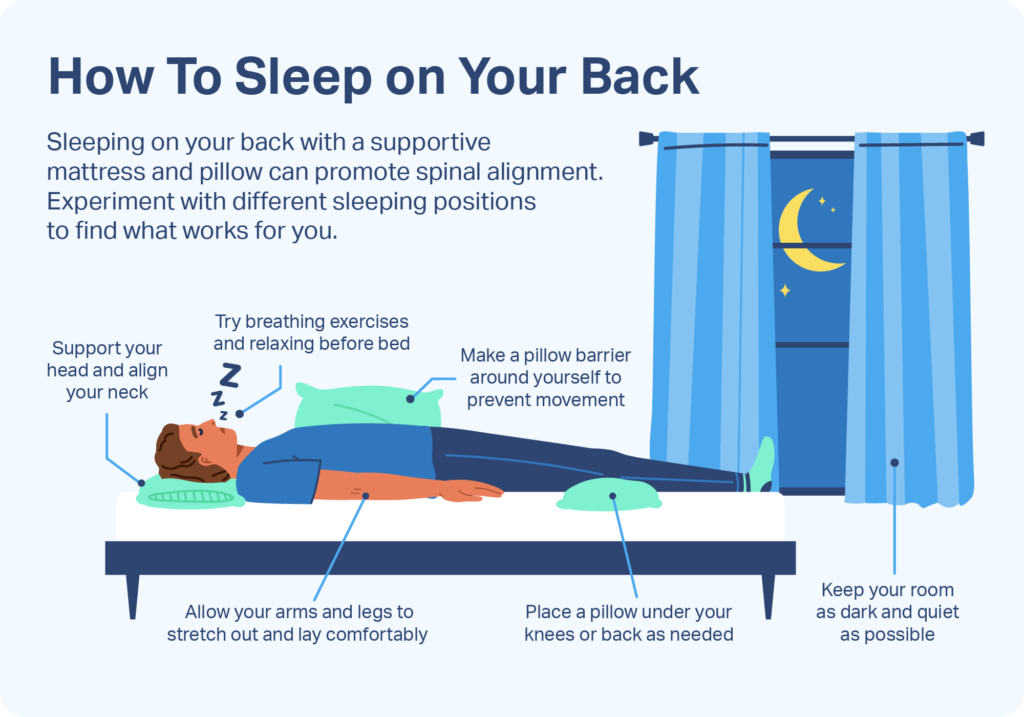
Back sleepers may place a thin pillow beneath the lower back, and another pillow beneath the knees, to relieve pressure in the lower back. To support spinal alignment, head pillows should fill the space between the neck and the floor. A pillow with a medium loft, or thickness, often works best for back sleepers.
Side sleepers may place a pillow between the knees to relieve tension. An additional, thin pillow between the waist and the floor can also be comfortable. To prevent aches and pains, head pillows should have a higher loft , enough to fill the space between the edge of the shoulder and the nape of the neck.
Stomach sleepers are at the greatest risk of neck and back strain. To avoid this, try sleeping without a head pillow (or with a very thin one). A small pillow beneath the hips can also alleviate discomfort.
Keep the Floor Clean and Clear
Keeping your bedroom clean and free of clutter makes it easier to get into a headspace that’s conducive for sleep. If you’ll be sleeping on the floor, clear the area around your sleeping area of anything that you could injure yourself with or roll over onto. Regularly vacuum, sweep, or mop the floor to pick up debris and allergens. Frequently wash your floor bedding as well.
Create Your Bed
Just as with a regular bed, you have plenty of options for designing an ideal floor sleeping space. Some people choose a minimal route, and sleep simply on a blanket or mat. Others prefer a bit more cushion like that provided by a sleeping bag, futon, or memory foam topper. There are also foldable or roll-up mattresses made for floor sleeping. Finally, you can place a traditional mattress on the floor, and just forego the bed frame. Add additional sheets and layers to make yourself comfortable.
Test It Out With a Nap
Sleeping on the floor can feel radically different than sleeping on a bed. It can take some time getting used to, several days or more. Try sleeping on the floor in different positions, and test it out with a nap first.
Sleeping on the floor feels great for some people and not so great for others. If it doesn’t feel good to you, you can always switch back to a traditional bed.

Still have questions? Ask our community!
Join our Sleep Care Community — a trusted hub of sleep health professionals, product specialists, and people just like you. Whether you need expert sleep advice for your insomnia or you’re searching for the perfect mattress, we’ve got you covered. Get personalized guidance from the experts who know sleep best.
References
18 Sources
-
Chung, S., & An, H. (2014). Cultural issues of co-sleeping in Korea. Sleep Medicine Research, 5(2), 37-42.
https://www.sleepmedres.org/journal/view.php?doi=10.17241/smr.2014.5.2.37 -
Kovacs, F. M., Abraira, V., Peña, A., Martín-Rodríguez, J. G., Sánchez-Vera, M., Ferrer, E., Ruano, D., Guillén, P., Gestoso, M., Muriel, A., Zamora, J., Gil del Real, M. T., & Mufraggi, N. (2003). Effect of firmness of mattress on chronic non-specific low-back pain: randomised, double-blind, controlled, multicentre trial. Lancet (London, England), 362(9396), 1599–1604.
https://pubmed.ncbi.nlm.nih.gov/14630439/ -
Jacobson, B. H., Boolani, A., & Smith, D. B. (2009). Changes in back pain, sleep quality, and perceived stress after introduction of new bedding systems. Journal of Chiropractic Medicine, 8(1), 1–8.
https://pubmed.ncbi.nlm.nih.gov/19646380/ -
National Institute of Neurological Disorders and Stroke. (2020, April 27). Low back pain fact sheet. NINDS.
https://www.ninds.nih.gov/Disorders/Patient-Caregiver-Education/Fact-Sheets/Low-Back-Pain-Fact-Sheet -
Sabino, J., & Grauer, J. N. (2008). Pregnancy and low back pain. Current Reviews in Musculoskeletal Medicine, 1(2), 137–141.
https://pubmed.ncbi.nlm.nih.gov/19468887/ -
Cary, D., Briffa, K., & McKenna, L. (2019). Identifying relationships between sleep posture and non-specific spinal symptoms in adults: A scoping review. BMJ Open, 9(6), e027633.
https://pubmed.ncbi.nlm.nih.gov/31256029/ -
Radwan, A., Fess, P., James, D., Murphy, J., Myers, J., Rooney, M., Taylor, J., & Torii, A. (2015). Effect of different mattress designs on promoting sleep quality, pain reduction, and spinal alignment in adults with or without back pain; Systematic review of controlled trials. Sleep Health, 1(4), 257–267.
https://pubmed.ncbi.nlm.nih.gov/29073401/ -
MedlinePlus: National Library of Medicine (US). (2017, October 25). Guide to good posture., Retrieved May 17, 2021, from
https://medlineplus.gov/guidetogoodposture.html -
Okamoto-Mizuno, K., & Mizuno, K. (2012). Effects of thermal environment on sleep and circadian rhythm. Journal of Physiological Anthropology, 31(1), 14.
https://pubmed.ncbi.nlm.nih.gov/22738673/ -
Mizuno, K., Okamoto-Mizuno, K., Tanabe, M., & Niwano, K. (2016). Sleep in a gymnasium: A study to examine the psychophysiological and environmental conditions in shelter-analogue settings. International Journal of Environmental Research and Public Health, 13(12), 1186.
https://pubmed.ncbi.nlm.nih.gov/27916912/ -
Koinis-Mitchell, D., Craig, T., Esteban, C. A., & Klein, R. B. (2012). Sleep and allergic disease: a summary of the literature and future directions for research. The Journal of allergy and clinical immunology, 130(6), 1275–1281.
https://pubmed.ncbi.nlm.nih.gov/22867694/ -
Kenny, G. P., Sigal, R. J., & McGinn, R. (2016). Body temperature regulation in diabetes. Temperature (Austin, Tex.), 3(1), 119–145.
https://pubmed.ncbi.nlm.nih.gov/27227101/ -
A.D.A.M. Medical Encyclopedia. (2020, July 7). Aging changes in the bones – muscles – joints. MedlinePlus., Retrieved May 17, 2021, from
https://medlineplus.gov/ency/article/004015.htm -
A.D.A.M. Medical Encyclopedia. (2020, January 13). Cold intolerance. MedlinePlus., Retrieved May 17, 2021, from
https://medlineplus.gov/ency/article/003095.htm -
Alexander, N. B., Grunawalt, J. C., Carlos, S., & Augustine, J. (2000). Bed mobility task performance in older adults. Journal of Rehabilitation Research and Development, 37(5), 633–638.
https://pubmed.ncbi.nlm.nih.gov/11322161/ -
Desouzart, G., Matos, R., Melo, F., & Filgueiras, E. (2015). Effects of sleeping position on back pain in physically active seniors: A controlled pilot study. Work, 53(2), 235–240.
https://pubmed.ncbi.nlm.nih.gov/26835867/ -
Lee, W. H., & Ko, M. S. (2017). Effect of sleep posture on neck muscle activity. Journal of Physical Therapy Science, 29(6), 1021–1024.
https://pubmed.ncbi.nlm.nih.gov/28626314/ -
Bader, G. G., & Engdal, S. (2000). The influence of bed firmness on sleep quality. Applied Ergonomics, 31(5), 487–497.
https://pubmed.ncbi.nlm.nih.gov/11059462/



